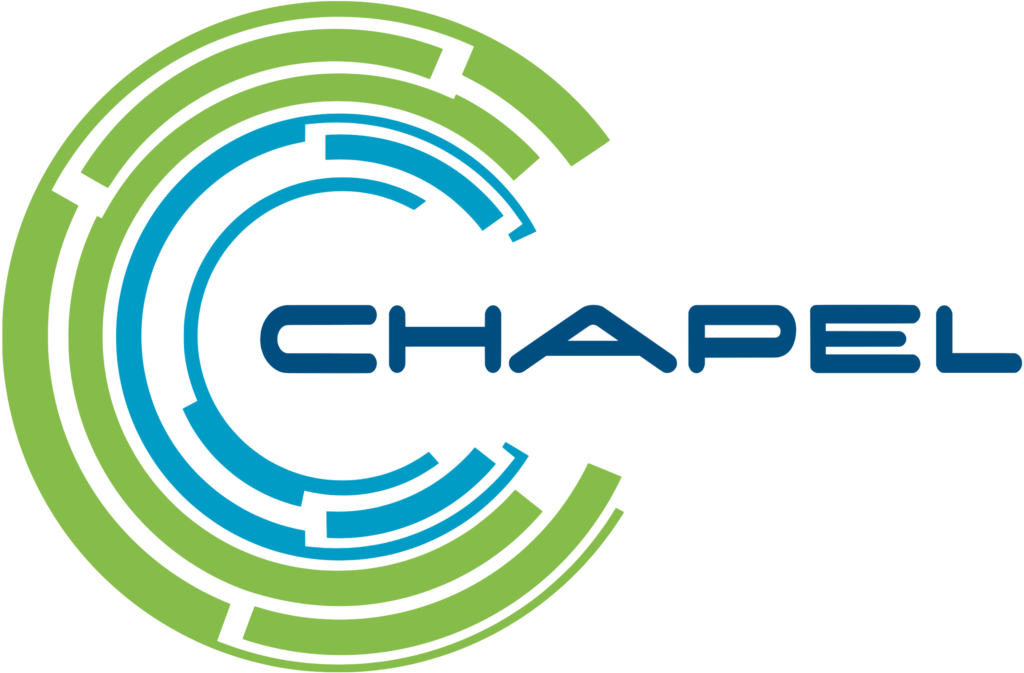Looking for eco-friendly programming languages? If yes, then this blog post is especially for you. This blog will analyze some of the main eco-friendly programming languages.
Due to the rise in our rapidly evolving digital world, the demand for software applications continues to rise. Because we rely on technology a lot now, we should be concerned about how making and using software impacts the climate.
The climate obstacles have induced the rise of an eco-friendly programming language.
It is specially made to lower energy usage, optimize resource utilization, and promote sustainable software development methods.
By adopting these languages, developers can readily contribute to a greener and more endurable tomorrow. This article will stress the value of eco-friendly programming languages and delve into their benefits, traits, examples, and optimal utilization methods.
Join us as we launch a trip towards sustainable software development via eco-friendly programming languages.
Understanding Eco Friendly Programming Languages
Green programming or eco-friendly programming languages are created to cut the environmental effect linked with software development and execution.
One of the best things about these languages is that they prioritize energy efficiency, resource optimization, and sustainability in their design and implementation. Therefore, by choosing eco-friendly programming languages, developers can simply donate toward the greener and more sustainable software ecosystem
Benefits of Eco Friendly Programming Languages
Benefits of Eco-Friendly Programming Languages:
Reduced Energy Consumption
Eco-friendly programming languages give priority to energy efficiency, leading to less energy consumption during the execution of software. By lowering the undue computational processes, these languages donate to a more bearable use of resources.
Optimized Resource Utilization
These languages highlight efficient resource management. It contains memory use, CPU utilization, and disk I/O functions. By optimizing resource utilization, eco-friendly programming languages ease waste and boost sustainable software development practices.
Lower Carbon Footprint
By promoting resource optimization and energy efficiency, these languages help reduce carbon footprints. Classic programming languages often contribute to extreme energy consumption and resource wastage, indirectly leading to raised carbon emissions. Eco-friendly languages aim to minimize this effect and prioritize sustainability.
Enhanced Performance
Eco-friendly programming languages not only focus on energy efficiency but also aim for optimal performance. Using intelligent algorithms and optimized code, these languages can deliver high-performance software while prioritizing sustainability.
Improved Scalability
Many eco-friendly programming languages are designed with scalability in mind.
They offer mechanisms and traits that allow the software to scale flawlessly without rapidly lifting energy use. This scalability makes sure that software applications can develop responsibly over time.
Compatibility with Low-Power Devices
These eco-friendly programming languages are generally optimized to run on devices that use low power. It includes IoT devices, smartphones, and embedded systems. The portability of these languages across various platforms ensures long-term software development viability for multiple goals.
Cost Savings
Decreased energy consumption and optimized resource utilization translate into cost savings. These languages will help in lowering power bills and optimizing hardware requirements. Thus, they result in long-term cost savings and improved financial sustainability.
Environmental Consciousness
Designers have to show their loyalty towards environmental awareness and sustainable methods by choosing eco-friendly programming languages. Moreover, this will benefit the company network and donate to our earth’s well-being.
By combining these eco-friendly programming languages into the software development plan has various huge rbenfits and allows for more sustainable and environmentally liable practices.
Features of Eco-Friendly Programming Languages
Features of Eco-Friendly Programming Languages:
Efficient Memory Management
Eco-friendly language’s main priority is efficient memory management methods such as smart memory allocation and garbage collection. By reducing memory leaks and undue memory use, these languages will help in lowering resource usage, thus improving energy efficiency.
Minimized Hardware Requirements
Eco-friendly programming languages are created to run efficiently on various hardware setups, including low-power devices. They aim to minimize hardware needs and utilize system resources judiciously, enabling software to run smoothly without extreme energy consumption or stress on the hardware.
Energy-Aware Algorithms
Eco-friendly programming languages use energy-aware algorithms that consider the energy usage implications of different code execution paths. By intelligently selecting algorithms optimized for energy efficiency, developers can ease the overall energy consumption of their software applications.
Integrated Power Management
Eco-friendly programming languages often provide built-in power management mechanisms that enable developers to control and optimize energy usage. These mechanisms allow programmers to adjust the power needs of specific code sections or devices, further lowering energy usage during program execution.
Eco-Friendly Design Patterns
These languages boost the use of design ways that prioritize energy efficiency. Examples include lazy initialization, caching, and asynchronous processing. By adopting these design patterns, creators can significantly lower energy usage in their software applications.
Resource Optimization
Eco-friendly programming languages highlight optimizing the use of system resources, such as CPU, memory, and disk I/O. They offer tools and APIs that allow designers to make perfect use of these resources, reducing waste and maximizing energy efficiency.
Performance Tuning
While prioritizing energy efficiency, eco-friendly programming languages also focus on providing the best performance. They offer methods and tools for best performance tuning. Thus, it enables creators to balance energy efficiency and software performance.
Sustainability Metrics
Some eco-friendly programming languages offer features or extensions that allow developers to measure and monitor the environmental impact of their software.
These measurements give vital details about the amount of power, resources, and carbon emissions used. Thus allowing creators to make data-driven findings for sustainable software development.
By mixing these traits, these languages enable developers to build software apps. Moreover, these languages will be functional, performant, environmentally sustainable, and conscious.
Examples of Eco-Friendly Programming Languages
Several programming languages prioritize energy efficiency and sustainability. Here are three notable examples:
Elixir

Elixir is a useful programming language built on the Erlang virtual machine. It is famous for its lightweight processes, fault-tolerance, and scalability. Elixir’s design focuses on concurrency, which allows for efficient resource utilization and lowered energy usage.
Rust

Rust is a systems programming language that aims to offer memory safety, performance, and concurrency. It highlights zero-cost abstractions and fine-grained control over system resources.
Rust’s memory safety features lower undue memory usage, leading to improved energy efficiency.
Go

Go, also known as Golang, is a programming language developed by Google. It prioritizes simplicity, efficiency, and ease of use. Go’s garbage collector efficiently manages memory, reducing the risk of memory leaks and optimizing resource utilization.
Its lightweight goroutines enable concurrent programming, boosting efficient execution and lower energy consumption.
Julia

Julia is a high-level, high-performance programming language especially designed for numerical and scientific computing. It mixes the ease of use of dynamic languages with the performance of statically-typed languages.
Julia’s efficient memory management and just-in-time compilation contribute to its energy-efficient execution
Nim

Nim is a statically-typed programming language that highlights efficiency, expressiveness, and compile-time execution. It offers features such as manual memory management and fine-grained control over resource utilization, allowing designers to optimize energy consumption.
Chapel

Chapel is a parallel programming language designed for high-performance computing and distributed systems. It offers constructs for efficient task-based parallelism and data distribution.
By optimizing parallel execution and resource utilization, Chapel contributes to energy-efficient programming in computational-intensive fields.
These examples show how eco-friendly programming languages can be used in various domains, from web development to scientific computing and distributed systems.
By picking these languages, developers can leverage their built-in features and design codes to develop software applications with reduced energy consumption and improved resource efficiency.
Challenges and Considerations
While eco-friendly programming languages offer numerous benefits, there are some challenges and considerations to keep in mind when adopting them:
Compatibility and Adoption
Transitioning to eco-friendly programming languages may require adapting existing codebases or learning new programming paradigms. Ensuring compatibility with existing systems and providing migration paths for developers can be a challenge.
Additionally, the adoption rate of these languages within the developer community may influence their long-term viability.
Performance Trade-Offs
In some cases, eco-friendly programming languages may offer a small degree of performance to gain energy efficiency and resource optimization.
It’s vital to balance performance needs with sustainability goals and assess the specific use cases of the software being created. Performance testing and profiling can help specify and handle any likely performance blockages.
Community Support
The availability of community support, libraries, frameworks, and tools plays a vital role in the success of eco-friendly programming languages. A strong and active designer community can donate to the growth and progress of these lan
It’s vital to assess the level of community help and attention before adopting a specific eco-friendly programming language.
Learning Curve
Learning a new programming language or paradigm can require time and effort. Creators may need to learn new skills to effectively use eco-friendly programming languages. This will help them create environmentally friendly software.
Consider the learning curve and availability of educational help when choosing to adopt these languages within your development team
Tooling and Ecosystem
The availability of development tools, IDEs, debuggers, and ecosystem integrations can greatly impact productivity and designer experience. It’s important to assess the tooling support and ecosystem maturity of eco-friendly programming languages to ensure smooth development workflows and ease of integration with existing systems.
Documentation and Resources
For developers to know and effectively use eco-friendly programming languages, sufficient documentation and learning resources are vital.
Think about the availability and quality of tutorials, documents, and community resources when assessing the feasibility if adopting these languages for your next project
By carefully thinking about these challenges and making informed decisions, developers and organizations can crush blocks and pull the benefits of eco-friendly programming languages in their goal of sustainable software development practices.
Best Practices for Sustainable Software Development
To promote sustainable software development and maximize the benefits of eco-friendly programming languages, consider implementing the following best practices:
Code Optimization
Optimize code by stopping duplicative operations, improving algorithm efficiency, and reducing resource usage. This not only enhances performance but also lowers energy consumption. Conduct regular code reviews and refactoring to identify and optimize areas of inefficiency.
Resource Recycling
Reuse and recycle resources whenever possible. Instead of creating new resources, explore ways to utilize existing resources efficiently. Release resources promptly when they are no longer needed to conserve energy and minimize waste.
Energy-Efficient Design Patterns
Adopt design patterns that prioritize energy efficiency. Examples include lazy initialization, caching, and asynchronous processing. These patterns can significantly reduce energy consumption in software applications without compromising functionality.
Continuous Integration and Deployment
Implement continuous integration and deployment practices to detect and address performance and energy-related issues early in the development cycle. Regular testing and monitoring allow for timely optimizations and ensure sustainable software deployment.
Efficient Memory Management
Pay attention to memory management practices. Minimize memory leaks, avoid unnecessary memory allocations, and utilize efficient memory deallocation techniques. Proper memory management reduces resource waste and improves energy efficiency.
Performance Profiling and Optimization
Use performance profiling tools to identify areas of code that consume excessive resources or contribute to energy inefficiency. Optimize these areas to reduce resource usage and improve overall energy efficiency.
Power-Optimized Configuration
Configure software and hardware settings to optimize power usage. Enable power-saving features, such as system sleep modes and dynamic frequency scaling, to reduce energy consumption during periods of low activity.
Sustainable Development Workflows
Implement sustainable development workflows, such as version control, issue tracking, and collaboration tools. These workflows improve team efficiency, reduce unnecessary rework, and contribute to sustainable software development practices.
User Education
Educate end-users about the importance of energy efficiency and responsible software usage. Encourage them to adopt energy-saving practices, such as adjusting power settings, closing unused applications, and utilizing software features that promote energy conservation.
Lifecycle Considerations
Consider the entire lifecycle of the software, including deployment, maintenance, and decommissioning. Plan for efficient software updates, patches, and retirement processes to minimize waste and energy consumption throughout the software’s lifecycle.
By following these best practices, developers can contribute to sustainable software development and leverage the full potential of eco-friendly programming languages.
Sustainable software not only reduces environmental impact but also improves performance, resource utilization, and overall software quality.
Which programming language is environment friendly?
The most environment-friendly programming languages are those that are compiled, efficient, and use less memory. Some of the most environmentally friendly programming languages include:
- C
- C++
- Rust
- Java
- Swift
- Haskell
- C#
- Go
- Dart
These languages are compiled, so they are now converted into machine codes before execution. Thus, this makes them more effective than other interpreted languages, coveted into machine codes at a runtime. Moreover, compiled languages use very little memory, which can aid in lowering the environmental effect of running them.
In addition to being compiled and very fast, these languages are utilized in different applications. Thus, it simply means they are perfect for a range of projects that can help reduce the impact on the environment of overall software development. It’s vital to know that no “greenest” programming language lives. The best language for you will depend on what you need.
But the languages mentioned above are a good place to start if you want an environmentally friendly programming language. Programming languages that are compiled, efficient, and utilize minimal memory are deemed the most powerful. One of the above languages would be a good choice if you want a programming language with minimal environmental effects.
What is the most natural programming language?
There is no single “most natural” programming language, as what includes “natural” can vary from person to person. However, some languages are typically considered to be more natural than others, due to their syntax and semantics.
Some of the most natural programming languages include:
- Python is a general-purpose language that is known for its easy and easy-to-read syntax. It is often used for data science, machine learning, and artificial intelligence
- Ruby is another general-purpose language that is known for its elegant and explicit syntax. It is often used for web development and other applications that need a high level of abstraction
- JavaScript is a scripting language that is used to add interactivity to web pages. It is also used for game development and other applications that need dynamic content.
- Swift is a newer language that is designed to be both efficient and expressive. It is often used for iOS and macOS development.
Ultimately, the most natural programming language for you will rely on your personal choices and needs. If you are new to programming, I suggest starting with a language that is known for its simplicity and readability, such as Python or Ruby.
Conclusion
The emergence of eco-friendly programming languages brings a new dimension to sustainable software development. By prioritizing energy efficiency, resource optimization, and sustainable coding practices, these languages contributed to lowering the environmental effect of software development.
Eco-friendly programming languages offer benefits such as reduced energy usage, optimized resource utilization, and lower carbon footprints. Examples like Elixir, Rust, and Go showcase the options of energy-efficient programming.
However, challenges such as compatibility, performance trade-offs, and community support need to be viewed. By following best practices for sustainable software development, including code optimization, resource recycling, energy-efficient design patterns, and ongoing integration and deployment, developers can donate to a greener and more sustainable software ecosystem.
Frequently Asked Questions
What is an eco-friendly programming language?
An eco-friendly programming language is designed with a focus on energy efficiency, resource optimization, and sustainability. It aims to reduce energy consumption and minimize the environmental impact of software development and execution.
How do eco-friendly programming languages reduce energy consumption?
Eco-friendly programming languages employ various optimization techniques, algorithms, and memory management strategies to minimize unnecessary computational operations and resource usage. By reducing energy requirements, they contribute to lower energy consumption during software execution.
Are eco-friendly programming languages less powerful than traditional languages?
Eco-friendly programming languages may have some performance trade-offs to achieve energy efficiency and resource optimization. However, they are designed to balance sustainability goals with functionality and can be powerful tools for software development.
Which industries can benefit from eco-friendly programming languages?
Various industries can benefit from eco-friendly programming languages, especially those that rely heavily on software development and execution. This includes sectors such as technology, healthcare, finance, and transportation.
Is there a cost associated with transitioning to an eco-friendly programming language?
Transitioning to an eco-friendly programming language may require adapting existing codebases or learning new programming paradigms. While there may be some initial costs associated with the transition, the long-term benefits of energy efficiency and sustainability outweigh the initial investment.

